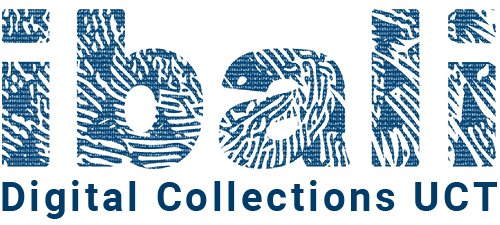
Many digital scholarly projects strive towards some form of online presentation/publishing, for example in the Digital Humanities. For showcasing such collections with a wide variety of media and interrelated content, the Ibali platform is a brilliant tool. Ibali allows for a highly configurable user experience through the creation of relevant narratives using your digital media. In using Ibali you also ensure that all items stored in the system are well organised and accessible.
What does ibali offer?
Ibali is powered by Omeka S, an open-source web publishing platform for galleries, libraries, archives, and museums that are interested in connecting digital cultural heritage collections with other resources online.
Its power lies in linked open data:
- Describe and connect elements of (and between) collections semantically using metadata standards.
- Publishing collections with linked open data connects them with other resources online.
- Improve cultural heritage discovery through search engines and allow deeper explorations of underlying narratives.
Alongside Omeka S, the dedicated iiif media server delivers digital media files and their metadata in a standards-led, structured manner. The server enables deep-zoom, side-by-side comparison, crowdsourced annotation, in-line metadata display and bookmarking. iiif server metadata standards are being adopted by GLAM institutions (Galleries/Gardens, Libraries, Archives, Museums) to foster the accessibility, interoperability and sustainability of digital collections worldwide.
Ibali can be accessed at https://ibali.uct.ac.za/
Showcase your next Digital Humanities Project
Many Digital Humanities projects strive towards some form of presentation and publishing.
Ibali is the most suitable place for collections with lots of media and interrelated content. The platform design improves the user experience by elevating the content and enabling narrative experiences with digital objects.Ibali also offers a place for more experimental and exploratory curation and showcase experiments in its Curators' Corner.
Project examples
- Transcribe early copies of South African newspapers so the text can be analysed.
- Develop a database organised site to showcase the rehearsal process of theatre production.
- Collate educational resources to tackle climate change.
- Showcase an object and its resonances through an exploratory curation site
To begin your showcasing journey with Ibali, read more on our How to get Started page and book an appointment below:
Resources
Ibali Iindaba sessions, where the latest updates on the platform and collections are showcased, are organised every second month and are open to all. (UCT staff can access all recordings here). All of the sessions, including slides and recordings are available through our open resources repository (click on year and Ibali Indaba to view all past editions).
Ibali and Digital Collections
As part of an extensive review done in 2018/2019 of available infrastructure for showcasing Digital Collections online, UCT Libraries (through DLS, Special Collections and Discovery Services) have decided to retire the Libraries’ Islandora Fedora platform, and move to an appropriately renamed university-wide system running on a locally hosted Omeka S publishing server, in conjunction with a locally installed iiif media server .
Read more about the digital collections being showcased.
Ibali Technical Components
Omeka S is a web publishing platform for GLAMs designed to create relationships between objects in collections as well as describe them through linked open data resources. The ‘S’ in Omeka S stands for ‘semantic’, as in connecting to the semantic web, where data in web pages is structured and tagged. Its primary focus is on organising elements of a collection so that the links between its items and the greater elements of the internet are strengthened, allowing for much more relevant searches and deeper explorations of underlying narratives.
Status:
Live since March 2021.
Technical Information:
Together with collection development, there are several ongoing processes to maintain full functionality:
- integration with IIIF server (see below),
- installation of additional modules to enhance user experience (https://omeka.org/s/modules/ ).
- application of standardised UCT branding while allowing users a level of customization in the look of a published website,
- establishment of best university practices to ensure a level of uniformity (monthly meetings of the UCT Metadata Working Group),
- development of training material for users (open resources on Ibali ).
The International Image Interoperability Framework is a growing community of the world’s leading research libraries and image repositories, which have embarked on an effort to collaboratively produce a standards-based technology and community framework for rich media delivery.
They have the following goals:
- To give scholars an unprecedented level of uniform and rich access to image-based resources hosted around the world.
- To define a set of common application programming interfaces that support interoperability between image repositories.
- To develop, cultivate and document shared technologies, such as image servers and web clients, that provide a world-class user experience in viewing, comparing, manipulating and annotating images.
Source: About IIIF. Accessible: https://iiif.io/about/
Status:
Live since June 2021.
Technical Information:
The iiif media server server consists of two parts, an Image API which deals with the presentation of images online in standardised manner (including the option of deep zoom), and a Presentation API which carries the integral metadata of the image (e.g. name, source, copyrights, etc). The use of these two APIs (Application Programming Interfaces) allows for images to be served all over the Internet without being separated from their metadata.